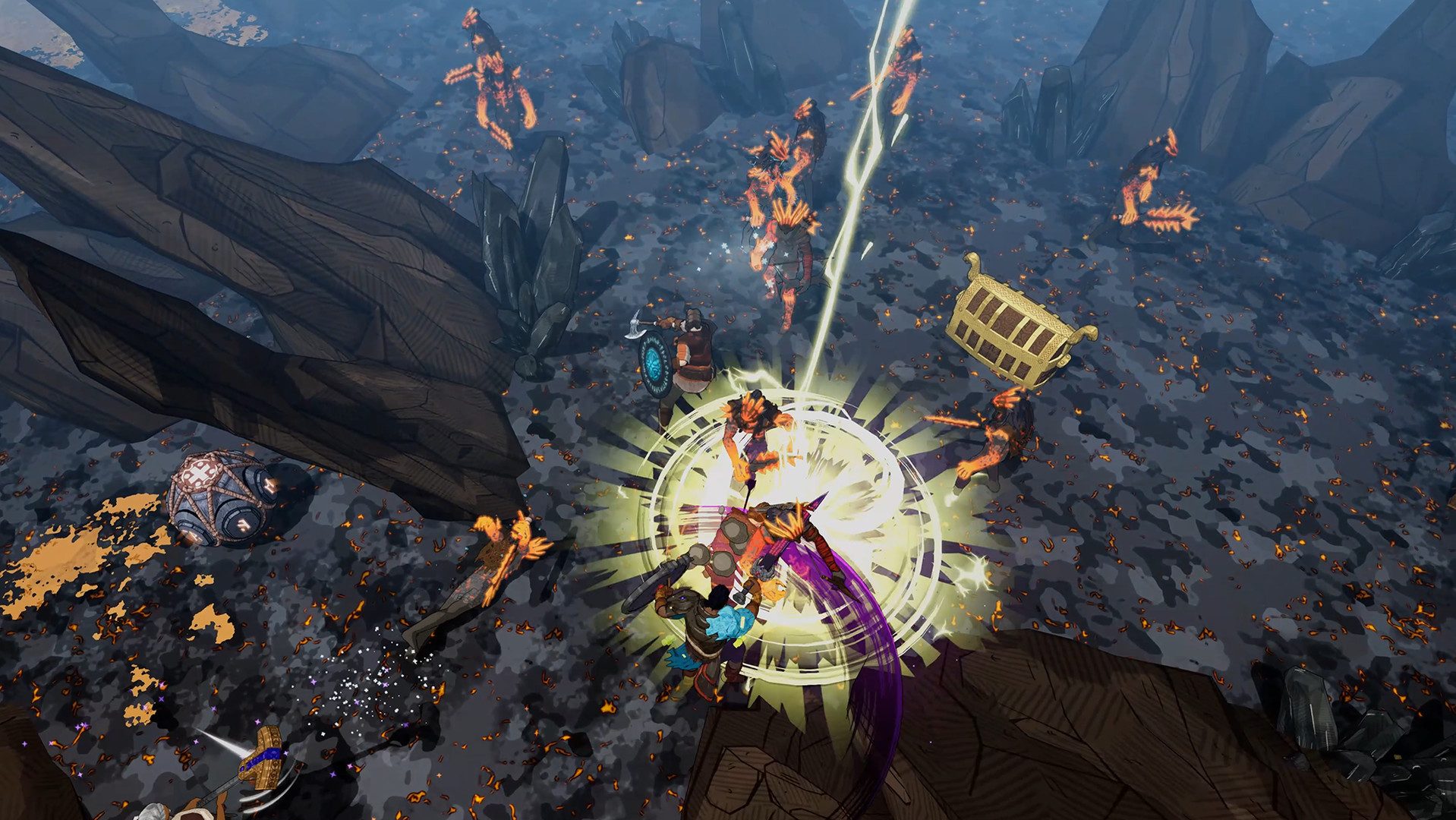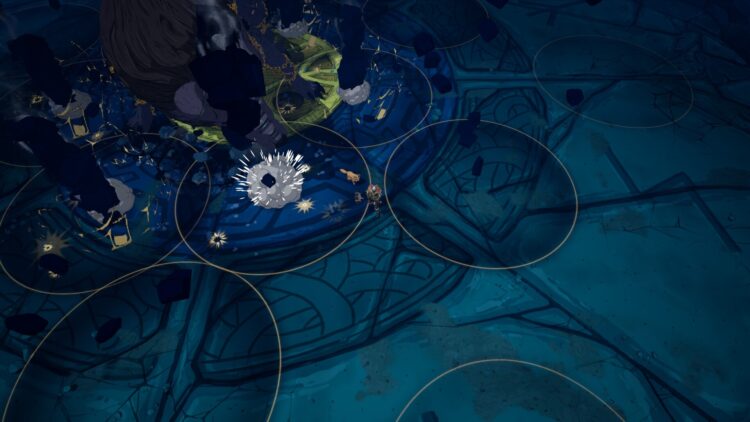
Survival Mode is an entirely different experience and probably is the one I ended up spending the most time with. While the core gameplay loop of ‘fight creatures, get materials, fortify base, fortify equipment, fight more things’ is always innately satisfying, I felt that it was enhanced by the fact that this game is designed for truly cooperative gameplay and that its players had fully embraced that concept. Everyone explained things and made sure not to leave others behind.

In every match I made during my online sessions, players were kind, informative, friendly, and challenged me to do better.

This game is surprisingly enjoyable to play with strangers. But if I am being completely honest, I think this is where Tribes of Midgard shines the most. I was able to learn even faster when paired with teams that had voice chat enabled, which may at first cause your brain to come to a grinding and anxiety-infused halt. Being able to explain to newer players what to do in order to progress has a profound impact on how quickly one can adapt to a new game style, especially for myself. Voice chat is a definite game-changer and can take what could be chaos and allow for team work and meeting objectives quickly and efficiently. Setting aside time to go and explore and bring back loot will prove useful to any new adventurer, and trips back and forth between the base and objective points are commonplace… Which means being able to communicate with your group would be rather handy. At night, some resources can be found that do not appear during the daylight hours. Taking these out early on is usually helpful, as it allows for less expenditure of resources overall and protects the seed of Yggdrasil at the base – a very crucial life form, and one that if it dies, spells game over for your group. Stronger monsters will approach the village base, looming closer and closer until they are either slain, or they arrive to rip and tear everything you know and love to shreds. Like what most things titled Blood Moon are, this one is also fairly unpleasant. Every few nights, the in-game sundial’s clock turns red, signaling a Blood Moon. The loop of gameplay is a standard affair: the online Saga Mode is where a group of up to ten players can take part together to complete different listed objectives over the course of two in-game weeks. Due to the frantic nature of the game’s many scenarios and goals, there aren’t too many opportunities to take everything in, but while mining for resources or smacking down enemies on my journeys I did enjoy my time simply traveling about and seeing what there was to see. The art style, music, ambience, and overall flavor is crafted well and immerses the player in the world almost immediately. While graphically the game is quite average, it is the style of presentation that the game pulls together quite expertly. Every creature and boss draws heavy inspiration from its source material and is presented in a loving and authentic art style that encompasses its subject wonderfully. Tribes of Midgard is set in a world of Norse mythology and lore.


 0 kommentar(er)
0 kommentar(er)
